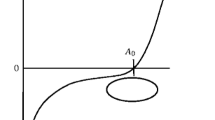Abstract:
Laboratory experiments designed to shed light on fluid flow through collapsible tubes, a problem with several physiological applications, invariably give rise to a wide variety of self-excited oscillations. The object of modelling is to provide scientific understanding of the complex dynamical system in question. This paper outlines some of the models that have been developed to describe the standard experiment, of flow along a finite length of elastic tube mounted at its ends on rigid tubes and contained in a chamber whose pressure can be independently varied. Lumped and one-dimensional models have been developed for the study of steady flow and its instability, and a variety of oscillation types are indeed predicted. However, such models cannot be rationally derived from the full governing equations, relying as they do on several crude, ad hoc assumptions such as that concerning the energy loss associated with flow separation at the time-dependent constriction during large-amplitude oscillations. A complete scientific description can be given, however, for a related two-dimensional configuration, of flow in a parallel-sided channel with a segment of one wall replaced by a membrane under longitudinal tension T. The flow and membrane displacement have been calculated successively by lubrication theory, Stokes-flow computation, steady Navier–Stokes computation and unsteady Navier–Stokes computation. For a given Reynolds number, Re, steady flow becomes unstable when T falls below a critical value (equivalently, when Re exceeds a critical value for fixed T), and the consequent oscillations reveal at least one period-doubling bifurcation as T is further reduced. The effect of wall inertia has also been investigated: it is negligible if the flowing fluid is water, but leads to an independent, high frequency flutter when it is air. The computations require very large computer resources, and a simpler model would be desirable. Investigation of the streamlines of the flow and the distribution of viscous energy dissipation reveals how the one-dimensional model might be improved; but such improvement is as yet incomplete.
Similar content being viewed by others
Author information
Authors and Affiliations
Additional information
Received 19 December 1996 and accepted 16 May 1997
Rights and permissions
About this article
Cite this article
Pedley, T., Luo, X. Modelling Flow and Oscillations in Collapsible Tubes . Theoret. Comput. Fluid Dynamics 10, 277–294 (1998). https://doi.org/10.1007/s001620050064
Issue Date:
DOI: https://doi.org/10.1007/s001620050064




